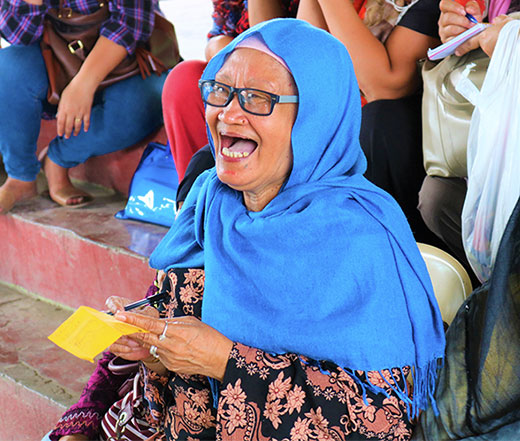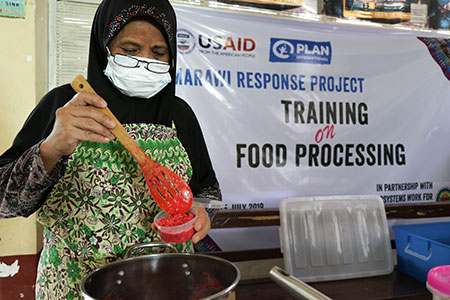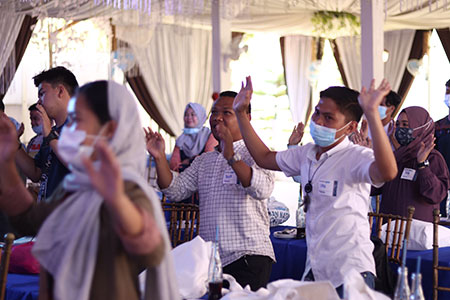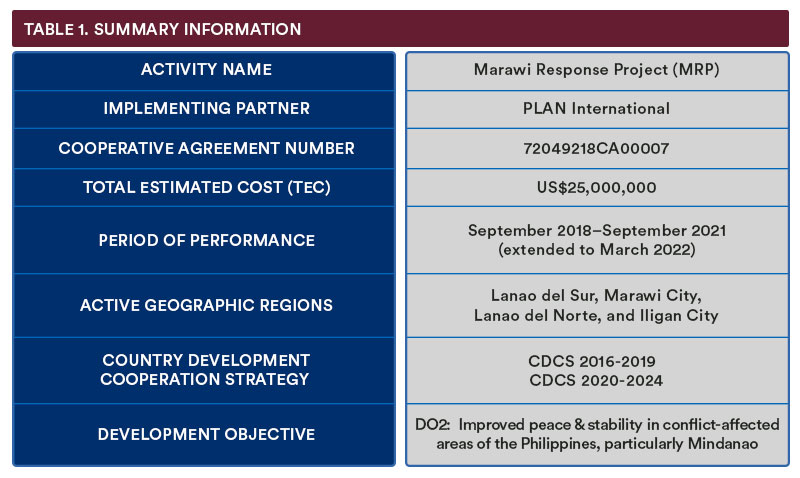Background
DESCRIPTION OF THE PROBLEM AND CONTEXT
The Marawi Siege in 2017 was a prolonged conflict that resulted in the displacement of an estimated 369,196 individuals who found refuge in emergency shelters or who lived with relatives or friends in surrounding communities. The siege carried out by both national and international ISIS-inspired armed groups worsened the socio-economic conditions of communities due to the destruction of property, livelihoods, and businesses. The Lanao provinces have long been armed conflict areas among multiple groups and clans. When the project started, these provinces were among the poorest provinces in the country.
The challenges faced by IDPs and HCMs are numerous and varied. These range from increasing social vulnerabilities, continuing economic weaknesses, and cultural conflicts and susceptibilities. These challenges are exacerbated when IDPs and their host communities lack confidence in the local government’s ability to address the crisis. When local governments and national government agencies do not address these crises sufficiently, tensions between IDPs and the HCMs may evolve into internal conflicts that violent extremist organizations (VEOs) can take advantage to further destabilize the area. Given the historical conflicts and the continuous presence of armed groups (especially VEOs) in Mindanao, the fears and tensions among IDPs and their host communities increased during and after the Marawi siege. The United Nations Office for the Coordination of Humanitarian Affairs (OCHA) identified the following challenges the IDPs and their host communities face in the emergency shelters and host families and communities:
-
 High vulnerability to and risk of illnesses and malnutrition because of inadequate shelter, food, and health services.
High vulnerability to and risk of illnesses and malnutrition because of inadequate shelter, food, and health services. -
 Increased number of out-of-school youth and children.
Increased number of out-of-school youth and children. -
 Low income and high unemployment because of lost jobs and livelihoods.
Low income and high unemployment because of lost jobs and livelihoods. -
 Social conflicts/tensions between host communities and IDPs.
Social conflicts/tensions between host communities and IDPs. -
 Lack of resources and support systems from families, neighbors, and communities.
Lack of resources and support systems from families, neighbors, and communities. -
 Limited access to livelihood opportunities and capital.
Limited access to livelihood opportunities and capital. -
 Dependence on humanitarian assistance and host community resources.
Dependence on humanitarian assistance and host community resources.
The 2019 MRP baseline study revealed significant differences in perceptions of self-reliance, polarization, and public representation between IDPs and host communities. The study also revealed significant perception differences between genders and geographical classifications (rural/urban). To summarize, the baseline study highlighted the following key findings:
- Women have lower perceived self-reliance than men.
- IDPs have lower perceived self-reliance than HCMs.
- Urban residents express lower levels of trust than rural residents.
- Urban residents score public representation lower than do rural residents.
- IDPs score public representation lower than do HCMs.
Ending displacement is a solution to the IDP’s situation. While waiting for this, USAID’s Marawi Response Project aimed to assist the IDPs and the host communities in finding ways to normalize their situations and take initial steps to prepare them to improve their lives and sustain them when they return to their homes.
Project Description
The response of the USAID/PH Mission to the Marawi crisis began as part of USAID’s medium-term strategic goal to support the reintegration or return of IDPs through 2020, particularly for those whose likelihood of returning to Marawi seems challenging. The following are the objectives of the plan:
- Phase 1: Address the early recovery needs of individuals displaced by the Marawi conflict
- Phase 2: Transition IDPs to social and economic stability; and establish the conditions for local governments and communities in and around Marawi to address their long-term rehabilitation needs.
MRP is designed to became a part of the second phase. The project became USAID’s primary Marawi response effort, integrating and building upon the initial work of USAID/PH in responding to the Marawi crisis.
Table 1 shows the summary information of the Marawi Response Project.
As of September 2021, the MRP covers the provinces of Lanao del Norte and Lanao del Sur, the cities of Iligan and Marawi, the twenty municipalities of Lanao del Sur and the four municipalities of Lanao del Norte as shown Table 2.
The municipalities of Lumbatan and Molando are additional sites reflected in the Y2 and Y3 annual reports, respectively. Tubaran is part of the original sites but not reflected in the list of project sites in Annual Reports from Year 1-3.
Description of the Intervention
and theory of change
MRP aimed to solidify a “social contract” between the constituents and the local government, which is to enhance of the social cohesion between the IDPs’ and the HCMs. This implies that MRP’s development interventions should help alleviate latent social conflict and promote strong social bonds among the constituents in the project areas. Considering the historical context of armed conflicts in the area, MRP used a conflict-sensitive approach in implementing its development interventions without weakening the activity’s ability to assist, empower and unite the IDPs and host communities to work together in identifying their problems and implementing courses of action that could usher them towards more durable solutions. The project’s Theory of Change (TOC) states that:
-
“If IDPs, returnees, and host populations actively participate in and contribute to the social and economic development of their communities in a manner that reduces inter and intra community tensions and fosters resilience, then they will be more self-reliant and able to advance solutions to their displacement.”

MRP’s TOC is operationalized through the following results framework (RF) shown in Figure 1:

DISCLAIMER
This report is made possible by the support of the American people through the United States Agency for International Development (USAID). The contents of this report are the sole responsibility of Panagora Group and do not necessarily reflect the views of the United States Agency for International Development or of the United States government.




